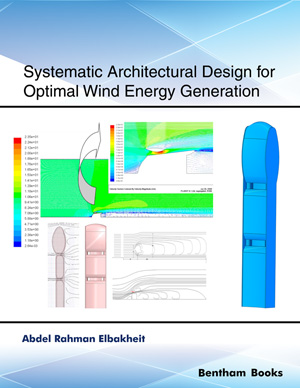Book Volume 3
Preface
Page: ii-ii (1)
Author: Guilherme Luiz Dotto, Sergio Paulo Campana-Filho and Luiz Antonio de Almeida Pinto
DOI: 10.2174/9781681084855117030002
General Considerations about Chitosan
Page: 3-33 (31)
Author: Guilherme L. Dotto
DOI: 10.2174/9781681084855117030004
PDF Price: $15
Abstract
Chitosan is a polysaccharide composed of repeated units of N-acetyl- 2-amino-2-D-glucopyranose and 2-amino-2-deoxy-D-glucopyranose, which are linked by β-(1→4)-glycosidic bonds. This biopolymer was discovered in 1859, and the industrial scale production started from 1971. During the last 20 years, a considerable interest for chitosan based materials has been observed. Chitosan is mainly obtained from crustacean shells, but other sources are also possible. In general, the shells are submitted to sequential steps of demineralization, deproteinization and deodorization to obtain chitin. Chitosan is then obtained by alkaline deacetylation of the chitin. The quality of chitosan is evaluated taking into account the characteristics such as, molecular weight, deacetylation degree and crystallinity. These characteristics are responsible for properties like biocompatibility, bioadhesivity, solubility and polycationic character. The properties of chitosan make this biopolymer an excellent and attractive material for several chemical and physical modifications, aimed at diverse applications. This chapter presents some general considerations about the biopolymer chitosan, including, definitions, history, main sources, obtention processes, characteristics, properties, chitosan-based materials and their unlimited potential applications.
Obtention Processes and Main Characteristics
Page: 34-48 (15)
Author: Anderson Fiamingo, Jorge Augusto de Moura Delezuk, Regiane Cristina Corrêa and Sergio Paulo Campana-Filho
DOI: 10.2174/9781681084855117030005
PDF Price: $15
Abstract
The occurrence of chitin and chitosan is discussed with emphasis on the main biomasses used as industrial raw material to produce the former polymer. Some potential sources which nowadays are not important for sustaining large scale production are highlighted as well. The main procedures used to extract alpha-chitin from crustaceans shells and beta-chitin from squid pens are presented and its advantages and drawbacks are discussed. The production of chitosan via Ndeacetylation of chitin is addressed with emphasis on thermochemical processes based on the alkaline treatment of chitin. Some unconventional processes are focused as well, mainly the ultrasound-assisted deacetylation, which allows the efficient conversion of beta-chitin into extensively deacetylated chitosan of high molar weight. The main characteristics of chitin and chitosan, namely; the average degree of acetylation (¯DA), the pattern of acetylation (PA), the average degree of polymerization (¯DA) and dispersity (Ð) are addressed and its influence on some polymer properties are also discussed.
Chitosan Nanofibers
Page: 49-77 (29)
Author: Eduardo H. Tanabe, Daliomar L. de O. Júnior, Guilherme L. Dotto and Daniel A. Bertuol
DOI: 10.2174/9781681084855117030006
PDF Price: $15
Abstract
Chitosan is a natural polymer produced from the chitin deacetylation. Chitosan has good biocompatibility, biodegradability, antimicrobial activity, wound healing property and antitumor effect. In recent years, chitosan nanofibers have become interesting, due to amazing characteristics such as, large surface area to volume ratio and high porosity with very small pore size. It can be readily produced using different methods. These nanofibers can be promising for many applications including filtration, removal of metals, drug-delivery, wound dressing, cell culture, tissue engineering, cosmetic, gas sensing and catalysis. The chapter will address diverse types of nanofibers produced from chitosan, their derivatives, and blends with several polymers.
Chitosan Nanoparticles and Nanocapsules
Page: 78-106 (29)
Author: Alexandre L. Parize, Adalberto Enumo Jr and Natália B. Caon Branco
DOI: 10.2174/9781681084855117030007
PDF Price: $15
Abstract
Technological advances achieved by biocompatible systems in several areas have attracted increasing interest in the development of nanometric systems based on biopolymers. In this context, this chapter describes the use of chitosan biopolymer as a carrier and base matrix for the development of nanoparticles and nanocapsules. Chitosan is an abundant natural biopolymer in nature, which is renewable, biocompatible, has hemostatic and mucoadhesive characteristics, and is an interesting polymer material in the development of nanometric systems. Most of the preparation methods are based on green routes without the presence of organic solvents and toxic agents. Chitosan based nanoparticulated systems can be easily reproduced through simple and easy routes, and applied in various fields such as: food and nutrition industry, agricultural, pharmaceutical, medical, renewable materials, controlled delivery, nanoencapsulation, environmental remediation, adsorption, among others.
Chemically Modified Chitosan Derivatives
Page: 107-132 (26)
Author: Adriana Pavinatto, Anderson Fiamingo, Andrea de Lacerda Bukzem, Daniella de Souza e Silva, Danilo Martins dos Santos, Tonimar Arrighi Domiciano Senra, William Marcondes Facchinatto and Sergio Paulo Campana-Filho
DOI: 10.2174/9781681084855117030008
PDF Price: $15
Abstract
Some chemical modifications aiming to introduce a new functionality, to improve and/or develop a given property of chitosan are addressed. Given the great number of possible reactions, focus is put only on some representative chitosan derivatives, exploring examples of those exhibiting anionic, cationic, amphiphilic and hydrophilic character, as well as on crosslinked derivatives. The main synthetic routes used to produce such chitosan derivatives are discussed as well as their structural and physicochemical characterization and some examples of applications in different fields. The effects of the characteristics of the parent chitosan, the locus of chemical modification, the nature and the content of substituent's on the properties of the chitosan derivatives are discussed. Some applications of chitosan derivatives are discussed as well.
Characterization Techniques for Chitosan and its Based Materials
Page: 133-153 (21)
Author: Nauro da Silveira, Denys A. S. Rodrigues, Tito Roberto S. Cadaval, Guilherme L. Dotto and Luiz Antonio A. Pinto
DOI: 10.2174/9781681084855117030009
PDF Price: $15
Abstract
All synthesized material needs to be characterized before application. For each type of application there are a number of possible techniques that may be used in order to identify specific material properties and their behaviors during a particular test. Currently a series of chitosan based materials have been synthesized and applied in various fields of science due the versatilities of the materials and its applications. Drug delivery systems, cellular interactions, in vivo studies, nanoparticles encapsulated vesicular systems, wastewater treatment and recovery of precious metals, are some of the applications of chitosan and its based materials found in the scientific literature. Thus, this chapter presents a series of techniques used in the characterization of materials, searching to relate the techniques used with the scientific applications. Analyses that aim at to determine the mechanical and chemical properties of the new material are presented, as well as the ways of monitoring and evaluation of interactions between cells and materials synthesized in cell interactions and in vivo systems.
Application of Chitosan Based Materials for Dyes/Metals Removal
Page: 154-180 (27)
Author: Tito Roberto S. Cadaval, Mery Luiza G. Vieira, Alisson S. Camara, Guilherme L. Dotto and Luiz A. A. Pinto
DOI: 10.2174/9781681084855117030010
PDF Price: $15
Abstract
Application of chitosan based materials in wastewater treatment has received considerable attention in last years. The most frequently applied technique for this purpose is the adsorption operation, which typically use activated carbon as adsorbent in the industrial wastewater treatment systems, because it has a large specific surface area. However, there has been an increasing interest in utilizing adsorbents from renewable sources for dyes/metals, removal from wastewater. Chitosan based materials has been widely used to remove heavy metals and dyes due to its high content of amino (-NH2) and hydroxyl (-OH) functional groups, which have high activity as adsorption sites. This chapter presents some applications of chitosan based materials for dyes/metals, removal from aqueous medium, providing information obtained using batch and continuous adsorption systems. The effects of parameters in the adsorption capacity, such as chitosan characteristics, process variables, chemistry interaction adsorbent/adsorbate, equilibrium, kinetics and thermodynamics are presented and discussed. The chapter also presents the equilibrium and kinetic models most commonly used and the thermodynamic studies reported for adsorption onto different chitosan based materials. Several examples are discussed to demonstrate the versatility of the material and its application as an adsorbent. Desorption performance and the structural parameters of the polymer in relation to regeneration as well as the development of new adsorbents are presented.
Application of Chitosan Based Materials for Drug Delivery
Page: 181-248 (68)
Author: Poliana P. Lopes, Nathalie B. Barroca, Ana Luísa Daniel-da-Silva and Bárbara J. Leite Ferreira
DOI: 10.2174/9781681084855117030011
PDF Price: $15
Abstract
One of the main challenges in drug delivery field is the development of formulations or devices designed to allow the transport of a suitable amount of the active pharmaceutical substance to the site of action in the body, and improve its efficacy by controlling the rate, time and place of release. The distribution of the drug to tissues different than the target place is unnecessary, wasteful, and a potential cause of toxicity. Chitosan, a versatile hydrophilic polysaccharide derived from chitin, is a non-toxic, biocompatible and biodegradable polymer which has attracted significant scientific interest, for its fundamental role in the progress of drug delivery technology. This natural biopolymer has inspired the development of safe and effective drug carrier systems due to its unique physicochemical and biological characteristics. The cationic character, exclusive of the chitosan, is attributed to the primary amino groups in the main backbone, which make its surface positively charged under acidic conditions; an important requirement that has been responsible for the enhancement of the load capability, tailoring the release profile of the drug and increasing the solubility. This chapter focuses on the use of chitosan-based therapeutic systems, including particles, hydrogel, film and scaffolds, through various anatomical routes by which the drug may be introduced in human body, such as oral, nasal, ocular, transdermal and local administration.
Application of Chitosan Based Materials as Edible Films and Coatings
Page: 249-271 (23)
Author: Vanderlei C. Souza and Guilherme L. Dotto
DOI: 10.2174/9781681084855117030012
PDF Price: $15
Abstract
Chitosan is the only pseudo-natural cationic polymer and, owing to its biocompatibility, biodegradability, non-toxicity, and antimicrobial activity, combined with its cationic character, is considered as the greatest potential polymer for obtaining food packaging, especially in the form of edible films and coatings. The successful manufacture of edible films and coatings for food applications is based on specific functional properties that the biopolymer should meet for each type of food, due to the different properties of the various components (nanoparticles, lipids, plasticizers, proteins, etc.). The addition of these compounds can be beneficial in the films production, with superior functional properties and thus extend their applications. In this chapter, we highlight the application of chitosan-based materials as edible films and coatings for food protection. The manufacture, and mechanical properties and the water vapor permeability (WVP) of the films and coatings are also discussed.
Application of Chitosan Membranes for Permeation and Pervaporation
Page: 272-313 (42)
Author: Gabriela Dudek and Roman Turczyn
DOI: 10.2174/9781681084855117030013
PDF Price: $15
Abstract
This chapter provides a comprehensive overview on the application of chitosan membranes in pervaporation and permeation processes. Pervaporation is a widely used membrane process for volatile liquid mixture separation. The separation of solvents is of extreme importance in a variety of industries ranging from chemical to food and pharmaceutical. The main thrust of research efforts has been concentrated on the polymeric membranes: investigation of new polymeric materials, modeling of component transport through dense polymers and description of their application. Chitosan membranes, owing to their hydrophilicity, biocompatibility, and ease of modification have been extensively applied for numerous pervaporation processes. The general overview of the preparation and application of different kinds of chitosan membranes e.g. crosslinked, blended, hybrid, grafted and chitosan membranes on porous support, in the separation of various solvents is presented. The progress of research, challenges and opportunities, as well as the prospect of pervaporation technique are also discussed.
Introduction
This volume presents 10 reviews contributed by eminent researchers around the world on chitosan based materials. The introductory chapters present information on general characteristics of chitosan and various types of materials which are based on it such as nanofibers, nanoparticles, nanocapsules and other chemically modified chitosans. This is followed by an explanation of chitosan characterization and extraction techniques. Concluding chapters describe the applications of chitosan products in water treatment, drug delivery, edible films and pervaporation membranes. Readers will therefore gain an understanding about chitosan and materials derived from this polymer and their practical applications. The volume serves as a simple reference for chemical engineering students and professionals interested in the basic and applied chemistry of chitosan and chitosan-derived products.












